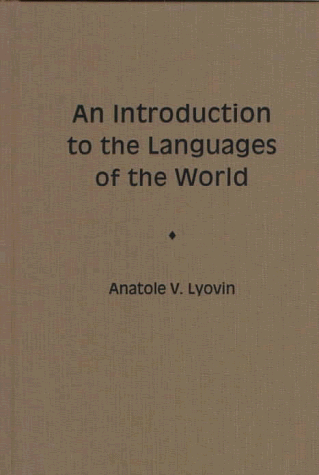Synopsis
An Introduction to the Languages of the World is a text designed to introduce beginning linguistics students, who now typically come to their study with little background in languages, to the variety of the languages of the world. Lyovin begins by explaining the classification of languages, discussing not only genetic classification but typological and sociolinguistic classification as well. He follows this with an explication of the classification of writing systems. A chapter is then devoted to each of the world's continents, with in-depth analyses of representative languages of Europe, Asia, Africa, Oceania, and America. A separate chapter is devoted to pidgins and creoles. Each chapter includes student exercises and suggestions for further readings. "The author succeeds in covering a broad range of important and interesting information, and I am not aware of any other work that could serve as an all-round textbook for a course on The Languages of the World". --Bernard Comrie, Linguistics, USC; author of The World's Major Languages (OUP) "clearly exhibits the author's very considerable erudition in several languages areas". Joseph Grimes, Linguistics, Cornell
Présentation de l'éditeur
The only textbook of its kind, An Introduction to the Languages of the World is designed to introduce beginning linguistics students, who now typically start their study with little background in languages, to the variety of the languages of the world. It is ideal for use in courses where students have mastered the basic principles of linguistics but lack background in the broad range of language phenomena found in the world's languages, such as vowel harmony and ergative constructions. It offers students an opportunity to explore, at various levels, structures of very different, highly interesting languages without necessarily possessing a speaking or reading knowledge of these languages. Lyovin explains the classification of languages, discussing not only genetic classification but typological and sociolinguistic classification as well. He follows this with an explication of writing systems. A chapter is devoted to each of the world's continents, with in-depth analyses of representative languages of Europe, Asia, Africa, Oceania, and America, and a separate chapter covers pidgins and creoles. Helpful features include an appendix of nineteen maps, student exercises, and suggestions for further reading.
Les informations fournies dans la section « A propos du livre » peuvent faire référence à une autre édition de ce titre.
